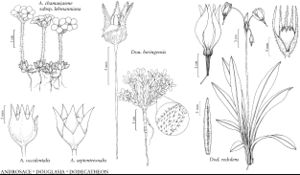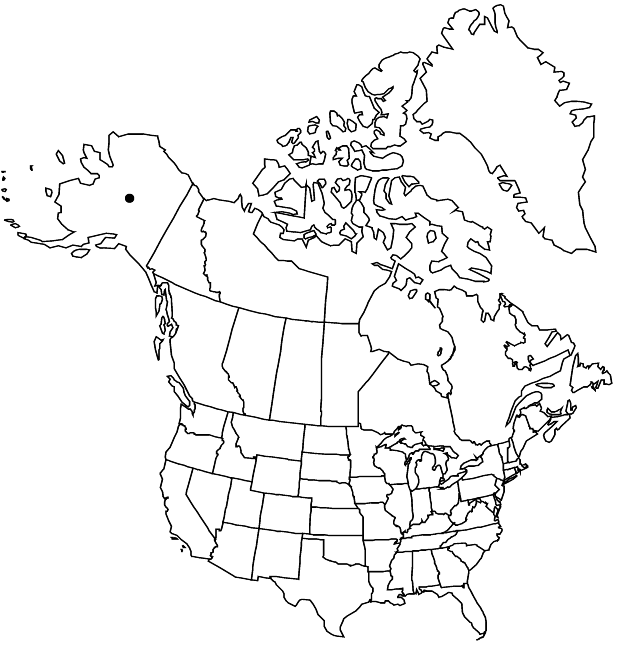Douglasia beringensis
Novon 4: 381, fig. 1. 1994,.
Plants loosely cespitose cushions or mats, each with branched caudex. Stems prostrate to ascending, with marcescent, imbricate, reddish leaves proximally and terminal, green leaf-rosettes. Leaves prominently ascending, thin; blade linear to oblong, 3–10 × 1–1.5 mm, margins entire or toothed, apex obtuse to slightly acute, surfaces densely covered with minute, branched hairs. Scapes 1–10 mm in early anthesis, to ca. 6 cm in fruit, densely hairy, hairs branched and stellate. Inflorescences 1 (–2) -flowered, usually bracteate, sometimes ebracteate; bract 1, lanceolate to lanceolate-ovate, 2–3 × 0.5–1 mm, hairy, hairs stellate. Pedicels absent. Flowers: calyx 3–5 × 3–4 mm, densely hairy, hairs minute, stellate and branched; corolla pink, white in age, limb 5–7 mm diam., lobes 2 × 1 mm, margins entire or slightly erose.
Phenology: Flowering early summer.
Habitat: Gravel slopes and outcrops
Elevation: 300-500 m
Discussion
Of conservation concern.
Douglasia beringensis has been found in western Alaska from the Seward Peninsula to the western Alaska Range; a fragmentary collection from the Yukon River in central Alaska is questionable. It differs from other northern species of Douglasia in the pervasive stellate hairs covering all vegetative parts. Douglasia gormanii has sparser forked hairs only on leaves and peduncles, not calyces; plants of D. gormanii also lack the silvery aspect that is characteristic of D. beringensis from its stellate indument.
Selected References
None.
Lower Taxa
"thin" is not a number.

